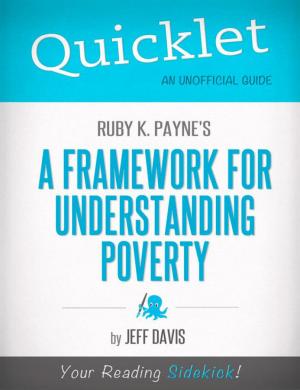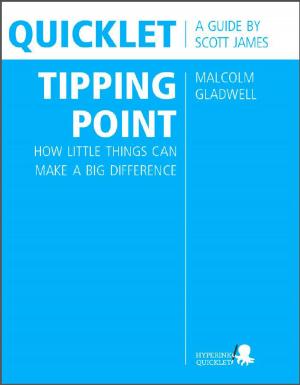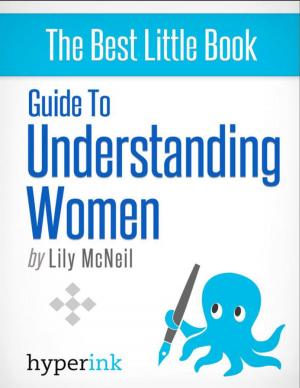Quicklet on Paul Collier's The Bottom Billion: Why the Poorest Countries are Failing (CliffsNotes-like Book Summary)
Business & Finance| Author: | Zeya Schindler | ISBN: | 9781614648598 |
| Publisher: | Hyperink | Publication: | March 2, 2012 |
| Imprint: | Hyperink | Language: | English |
| Author: | Zeya Schindler |
| ISBN: | 9781614648598 |
| Publisher: | Hyperink |
| Publication: | March 2, 2012 |
| Imprint: | Hyperink |
| Language: | English |
ABOUT THE BOOK
“By 2050 the development gulf will no longer be between a rich billion in the most developed countries and five billion in the developing countries; rather, it will be between the trapped billion and the rest of humankind.”
Written in 2007, Paul Collier’s, The Bottom Billion: Why the Poorest Countries are Failing and What Can Be Done About It, was widely hailed as a landmark work in the field of development economics. Intended in Collier’s own words as a book on economics that could be read on the beach (Collier, TED Talk), The Bottom Billion uses relatively simple descriptive prose to challenge traditional perspectives on the state of global poverty and what can be done about it.
Based on years of statistical research, the Bottom Billion examines why some people and places in the world are seemingly stuck in poverty while the majority of ‘developing nations’ are rapidly becoming more affluent. Collier proposes several methods for helping the most impoverished nations to become ‘unstuck’. He emphasized four main ‘development traps’ that have often been overlooked in aid, economic, and foreign policy circles; notably, Collier questions current norms in provision of international aid to the poorest countries, suggesting strategic use of aid and asserting that more is not necessarily better.
MEET THE AUTHOR
Zeya is a native of the San Francisco Bay Area. After earning a BA in Modern Literature at the University of California at Santa Cruz, Zeya began building a career in International Development work that allowed him to live and travel extensively in Asia, the Middle East, and Europe. In 2011 he completed an MA in International Development from Oxford Brookes University in Oxford, England.
EXCERPT FROM THE BOOK
Collier estimates four of the five billion once stuck in poverty are now achieving greater levels of affluence and mobility. However, he argues the last billion—the bottom billion—are being left far behind. Not only is this demographic failing to achieve strong economic progress, says Collier, but in many cases it is regressing to a quality of existence more characteristic of the fourteenth century than the twenty-first.
For fear of stigmatization, Collier declines to list the countries where the bottom billion live. He does comment the majority of those living in the most abject conditions are located within a group of some 58 states, mostly in Africa and Central Asia. Over the last several decades, four fifths of the world’s poor have made substantial gains towards a middle class lifestyle. Still, the average person in these bottom billion countries is now poorer than in 1970 and are statistically more susceptible to war and violent conflict, disease, environmental hazards, and corrupt governance. Many of the problems shared by these people are exacerbated by a lack of health care, education and other vital infrastructure...
Buy a copy to keep reading!
ABOUT THE BOOK
“By 2050 the development gulf will no longer be between a rich billion in the most developed countries and five billion in the developing countries; rather, it will be between the trapped billion and the rest of humankind.”
Written in 2007, Paul Collier’s, The Bottom Billion: Why the Poorest Countries are Failing and What Can Be Done About It, was widely hailed as a landmark work in the field of development economics. Intended in Collier’s own words as a book on economics that could be read on the beach (Collier, TED Talk), The Bottom Billion uses relatively simple descriptive prose to challenge traditional perspectives on the state of global poverty and what can be done about it.
Based on years of statistical research, the Bottom Billion examines why some people and places in the world are seemingly stuck in poverty while the majority of ‘developing nations’ are rapidly becoming more affluent. Collier proposes several methods for helping the most impoverished nations to become ‘unstuck’. He emphasized four main ‘development traps’ that have often been overlooked in aid, economic, and foreign policy circles; notably, Collier questions current norms in provision of international aid to the poorest countries, suggesting strategic use of aid and asserting that more is not necessarily better.
MEET THE AUTHOR
Zeya is a native of the San Francisco Bay Area. After earning a BA in Modern Literature at the University of California at Santa Cruz, Zeya began building a career in International Development work that allowed him to live and travel extensively in Asia, the Middle East, and Europe. In 2011 he completed an MA in International Development from Oxford Brookes University in Oxford, England.
EXCERPT FROM THE BOOK
Collier estimates four of the five billion once stuck in poverty are now achieving greater levels of affluence and mobility. However, he argues the last billion—the bottom billion—are being left far behind. Not only is this demographic failing to achieve strong economic progress, says Collier, but in many cases it is regressing to a quality of existence more characteristic of the fourteenth century than the twenty-first.
For fear of stigmatization, Collier declines to list the countries where the bottom billion live. He does comment the majority of those living in the most abject conditions are located within a group of some 58 states, mostly in Africa and Central Asia. Over the last several decades, four fifths of the world’s poor have made substantial gains towards a middle class lifestyle. Still, the average person in these bottom billion countries is now poorer than in 1970 and are statistically more susceptible to war and violent conflict, disease, environmental hazards, and corrupt governance. Many of the problems shared by these people are exacerbated by a lack of health care, education and other vital infrastructure...
Buy a copy to keep reading!















